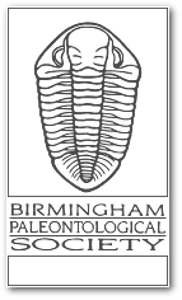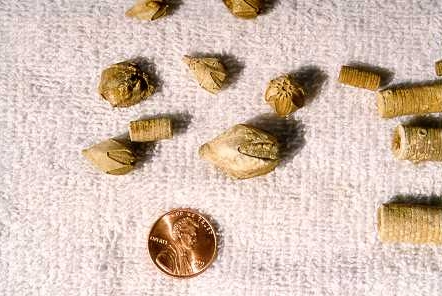Every year, the BPS visits a lake in Franklin County, Alabama when the lake level is down from normal, exposing rocks from the Bangor Limestone dating back to the late Mississipian Period of geological history (about 320 million years). About 25 BPS members and guests attended the field trip, which took place on a beautiful, sunny, and pleasantly warm day.
According to Jim Lacefield, the Bangor Limestone formation is "fossiliferous from top to bottom, and collecting sites in it in both Colbert and Franklin Counties are world famous for echinoderms - particularly for crinoids and blastoids - and bryozoans such as Archimedes." Indeed, there are numerous sites in Alabama connected with this formation, and Jim says it is the best rock unit in Alabama for Mississippian fossils, and that few other units are better anywhere for the time frame in question.
We all parked our vehicles along an access road by the lake, and then walked out along the rocky, sandy shoreline. It was in these areas where we found a variety of interesting fossils: blastoids, crinoid stems and loose stem plates, Archimedes spirals, brachiopods, and horn corals. Unfortunately, my camera malfunctioned while I was at the site, so I have no pictures of the lake itself or the sandy shores.
--Edited by Vicki Lais
Fossils were found in two "modes": According to the Fossil Handbook by Rich et al. (1996), |
||
|
The second photograph shows a Typically these pieces are less than an inch in length, and |
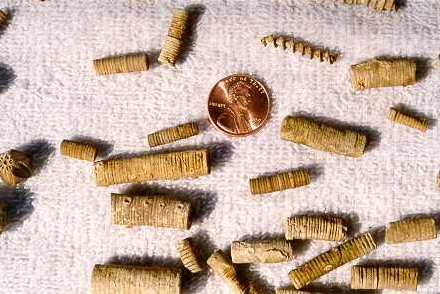 |
| Fig. 2 - examples of short sections of crinoid stalks, some with nodal holes. |
|
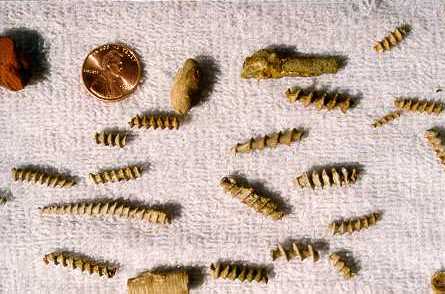 |
|
| Fig. 3 - examples of Archimedes corkscrew bryozoa. |
| The fourth photograph shows a variety of small horn corals. According to the Fossil Handbook, these belong to the group Rugosa because their surface is marked by wrinkles. Most of the pieces I found were weathered and in poor condition. |
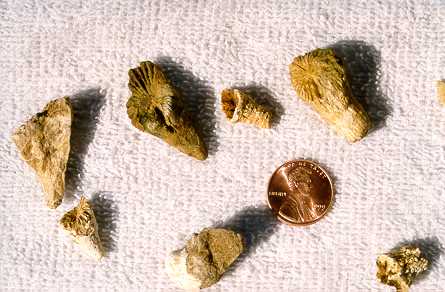 |
| Fig. 4 - examples of small Rugosan horn corals. |
|
| The remaining photographs show a variety of small brachiopods, Archimedes spirals and crinoid stem plates encased in a limestone matrix. The last picture is typical of many Mississipian rocks in northwest Alabama: showing hundreds of loose crinoid stem plates. Although I was able to stay at the site for only an hour and a half, it was still possible to find many interesting specimens. Unfortunately, I missed the highlight of the trip: a visit to the home of Jim and Faye Lacefield in Tuscumbia. It was very kind of Jim and Faye to invite the BPS to their home, and I heard from those who went that it was a very nice experience. |
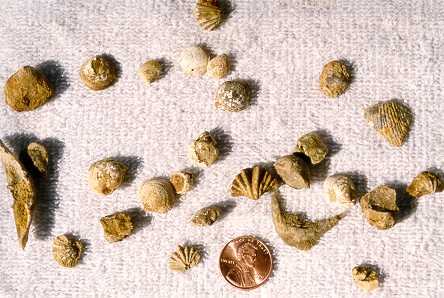 |
| Fig. 5 - examples of small brachiopods. |
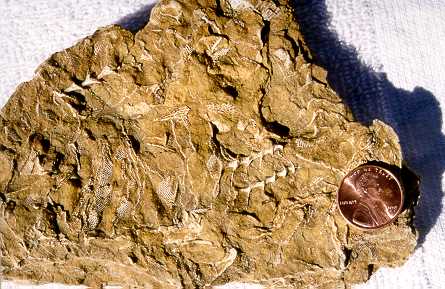 |
|
| Fig. 6 - rock with two strong Archimedes spirals encased. |
|
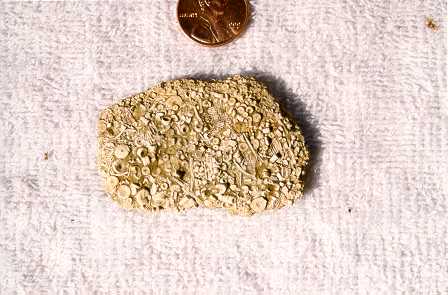 |
|
| Fig. 7 - piece covered with crinoid stem plates and bryozoa. |
The BPS will continue to visit this area, probably
at least once a year. The possibility of finding interesting
Mississippian fossils is always present at this site, and it is a trip
worth looking forward to each year.
